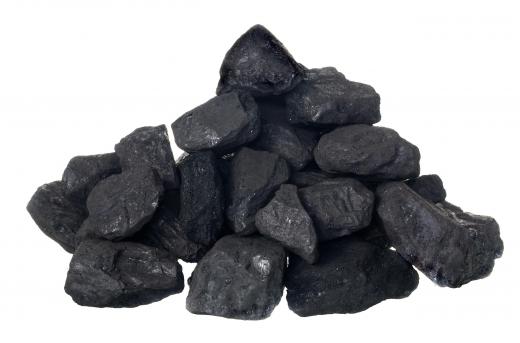Which Material Has the Highest Melting Point?
 Michael Anissimov
Michael Anissimov
This is a difficult question to answer because new materials and alloys are being created all the time, and the material with the highest melting point now could change as new compounds are synthesized. Currently the record-holder is tantalum hafnium carbide (Ta4HfC5), a refractory compound with a melting point of 4488 K (4215 °C, 7619 °F). By mixing together various metals to create alloys, even higher melting points can be achieved. Materials with such exceptional physical properties are sometimes referred to as superalloys.
The chemical element with the highest melting point is carbon, at 4300–4700 K(4027–4427 °C, 7280–8000 °F). The second highest melting point of the chemical elements is tungsten, at 3695 K (3422 °C, 6192 °F), which is why it is used as a filament for light bulbs. Sometimes tungsten is called the element with the highest melting point because carbon does not actually melt under atmospheric pressure, rather it sublimates (transitions directly from a solid to a gas) at 4000 K (3727 °C, 6740 °F).

When very high melting points are desired in a piece of hardware, sometimes ceramics are used. One example is during Project Pluto in the 1950s, when American scientists attempted to create a nuclear-powered ballistic missile with an unshielded, gigawatt-level reactor. The reactor produced such immense heat that a ceramic chassis and components were necessary.

Under extreme pressures, the melting point increases. The Earth’s inner core of iron, for example, has a temperature of approximately 5,000 to 6,000 °C (>9,000 °F), yet it is solid, because the pressure there is about 3 million times greater than on the surface. Conversely, when the pressure is decreased, so does the melting point. On the surface of Mars, pressure is so low that any liquid water would evaporate almost immediately. This is why we have observed evidence of small temporary springs being created on Mars but no permanent bodies of water.
AS FEATURED ON:
AS FEATURED ON:













Discussion Comments
What is the highest temperature, in oC that that ceramic mentioned above for "unshielded, gigawatt-level reactor" could withstand?
Carbon can withstand heat up to 6000 F.
Between gold and iron, which has the higher mp and bp?
Which element is a green poisonous gas: chlorine, bromine,
lithium, neon or iron?
I need a material that has a melting point past 5000 degrees for an idea of mine, but I can see that it doesn't exist yet. Could you estimate how long it will take for scientists to create such a metal?
There are so many high melting points, it is crazy!
How can anything be the record holder if some alloys melt at an even higher temperature?
Actually this Ta-Hf-C is an enigma. It is not the highest melting point material. This info has come from misinterpreting the phase diagram. I know people who have spent years trying to chase this dragon. It just isn't so.
Tantalum hafnium carbide is a ceramic with a melting point of 4215 C - the highest known.
Carbon needs a high pressure to melt. it sublimes at atm pressure. Thus tungsten would have the highest melting point.
"By mixing together various metals to create alloys, even higher melting points can be achieved."
Actually, alloys normally have lower melting points than either of the components. The lowest is for an eutectic ("perfect" alloy).
High melting points are achieved by ceramics and similar compounds which are rather a combination of a metal with a non-metal, like carbon or nitrogen.
What is the cost of the material mentioned to be possessing the highest melting point?
Post your comments